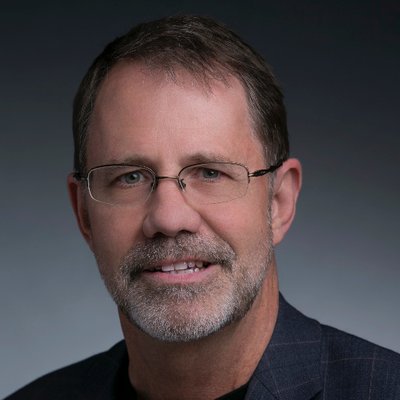
Today, our guest is Rex Miller. In this episode, we’re talking about Work Minus Wellness Programs. Hi, Rex. How are you?
I’m great, Neil. How are you doing?
I’m excellent. Rex, describe yourself a little bit to our viewers. You are a man of many talents so how would you best introduce yourself?
So, the work we do really falls into three to four buckets. One is the research which is a process called MindShift. It’s collective research tackling what you might call wicked problems over a period of time to get to the root issues and look at what the transformative or how to get unstuck from these challenges that keep hitting us year after year. The second bucket is showing organizations how to actually apply what we’ve learned in the research. And then, the third bucket is the coaching advisory, what I like to call adult supervision for grownups who can’t get along.
Oh, well, excellent. So, tell us how you got involved in researching wellness programs. Where did that come about?
So, that’s an evolution from a couple of previous research projects. The very first one was looking at the dysfunctions in delivering capital projects, why 70% of them are late and over budget, why they’re so much adversarial dynamics, and why we hate each other at the end of the capital projects. That got us into looking at some common themes in dynamics that cause systems, like the capital project systems, that get stuck. So what about the people in the buildings? What are these projects doing or what can they do to help companies create greater employee engagement, higher productivity, innovation?
So, that led to the research called Change Your Space, Change Your Culture. And the key role, not in just creating a good space, but the process of leading clients through understanding how facilities, how environment affects strategy, workflow, all those things that never get brought to the table and how environment can either enhance that or constrain it. And then, part of that surfaced this thing called shadow culture and then we started looking at the disengagement numbers and that began to tie into the whole wellness conversation.
After that project, we started seeing more and more presentations on workplace wellness. I call it the tips and tricks show, you know, people talking about yoga rooms or breathing and meditation and things like that. But they never really, from my research standpoint, never really got to what I consider the root issues. One of our key participants in the change your space, change your culture was CBRE and their headquarters project in L.A. In change your space, change your culture, we saw that as an incredible change management story.
How do you take brokers who are entitled and have these, you know, 15×15 private offices and a culture, you know, you might call it a pecking order culture, how do you convince them to give up private offices and go to a completely open space? And that was the story. That was what we were pursuing. When I arrived to see that and hear the story, they had this little footnote about this organization called Delos and this WELL building certification. They were the very first corporate space to get a WELL building certification.
So, of course, I didn’t really pick it up on the radar. It wasn’t what we were looking for but it’s a footnote in the book. After that book came out, CBRE started ordering caseload after caseload of books, and after about 500 books, I called back and asked Lew Horne, the President of the southern region for CBRE, what is up, you know? What’s going on? And he was sharing with me their wellness story and their journey that that this new thing called WELL building standard gave them a roadmap on how to ask the question on how do we live and work healthier together and then how to express that in a physical environment.
So, that intrigued me, but what became compelling is when he told me that they’ve had 14,000 visitors in the last 18 months to an office of 250 people. So, when I heard that I said, “I’ve got to come out and see.” So, I went out and saw it and saw how it radically transformed the business model, the people in the space, they were taking what they were experiencing at work and taking it back home with them, and you know, to have 14,000 visitors come to see something, it just raised the question. Is this lightning in a bottle, one off deal, or is there something more substantial here?
Yeah. So, you’ve primed our interest, for sure. So, take us into it a little bit. Tell us more about what this is.
So, what this is, in the research, we brought 10 large international leaders of organizations together to CBRE in June of 2017 to ask the question, is there more here? And so, we launched a research initiative with about 130 people. For the next 18 months, we had eight summits, quarterly summits, in different cities looking at positive outliers and we began to see some patterns. Our initial mission was that we wanted to make sure that what we were doing in the corporate real estate space was enhancing and supporting human resources in their efforts on wellness.
The first question we had to ask, of course, because none of us knew anything about wellness or wellness programs. We’re corporate real estate construction architecture. We come from that world. So, we had to learn what is the problem wellness is trying to solve, and for that, we went to the Cleveland Clinic to talk to the first Chief Wellness Officer, Dr. Roizen, and he framed up the problem, and we can talk about that in a minute, but that was so shocking to us on the risk companies currently face that we wanted to then go into, so, what’s the solution?
If wellness programs are the solution, what are they based on? What do they do in how effective we are? And that’s when we learned, shockingly, that 95% of all wellness programs fail to improve the health outcomes, fail to reduce cost, and then we were stuck. We were in this, oh, my gosh, what do we do? We certainly had to completely change our whole research mission and first say, if wellness programs don’t work and if we have this burning platform of this health crisis coming upon us, what are the alternatives?
So, that led to the chase. So, it’s a little bit like Indiana Jones, you know, who all of a sudden were compelled to find a problem because, really, for the first time in my life, when I left Dr. Roizen’s office, I saw a true existential threat to the economy, to businesses, and to civic order.
Tell us what that is. Frame the issue for us. What is the big wellness challenge that organizations and even as a nation and a species we’re facing?
The challenge is affluence and with affluence comes this thing called chronic disease, and in the United States right now, 50% of the population has some form of chronic disease. And chronic disease are these long term conditions that get worse over time and are extremely expensive. 70% of our population is either obese or overweight and that leads to metabolic syndrome, which then leads to chronic disease. You don’t get chronic disease overnight and you don’t get rid of it overnight. It is rising at a 7% compounded rate.
Right now, the U.S. spends 18% of its GDP, about $3 trillion, on health care, and 80% of that is because of chronic disease. That’s going to double in the next 10 years. So, right now, 50% of the federal budget is for health expenses. So, imagine in 10 years that doubles which means our taxes double. Imagine right now, in the United States, the average company spends $12,000 per year per employee and an employee spends about $6,000 per year for their family for health costs. That doubles in the next 10 years.
So, that’s truly an existential threat, and in the United States, you already begin to see some of the social fabric beginning to unravel with that in the last election in the opioid crisis. These things are now bursting through the surface where they were under the radar, you know, the whole debate about living wage, all these things are now beginning to bubble up, but they’re a response to this risk everybody feels. So, the great question is how do we slow the rise of chronic disease or reverse it? And that’s where wellness programs fail.
So, wellness programs were supposed to come in and say, “Okay. We can combat this. We can solve it.” Why are they such a terrible failure?
Well, there’s a couple things. One is they don’t deal with root cause and they don’t deal with human nature. And they also are not dealing with chronic disease. So, if you look at the cost that a company occurs in health costs, about 80% of their cost is made up in about 10% of their people and these are the chronic disease issues. And so, there’s two pieces of wellness programs. There’s what’s called disease management which are these high cost employees that have these very complex issues.
And then there is the lifestyle management, all the stuff that you and I are exposed to, you know, with the CoreNet meetings, or IFMA, or AIA, or whatever, all those presentations are talking about the lifestyle management side. So, when you look at a typical wellness program in the United States, they change out. They change vendors every year or two and the vendors are not highly sophisticated. They’re salespeople. So, we’re not keeping population data. We’re not managing that.
So, 80% of that cost is off the table because wellness programs are typically short-term driven and we’ve got conditions that took 10, 15, 20 years to come and to manifest. So, we’re not moving that at all. So, let’s look at the lifestyle side of it. The lifestyle side of it deals with how do we walk more, how do we reduce smoking, abusing drugs and alcohol, and consuming the wrong kinds of food. And those are the key behaviors that lead to chronic disease.
So, wellness programs use something called traditional economics theory to shift behavior. If I give you the right information and I give you the right incentives, you will make the right behaviors. And what we found is this new theory of behavioral economics that proves that, number one, well, first of all, Neil, I don’t know if you have kids or not. Do you have kids?
Yeah. I’ve got two.
All right. And I’m assuming that you’ve given them the right advice at some point in time and you’ve given them certain incentives, and typically, what we find is kids don’t always take our advice or follow the incentives. And so, what behavioral economics has learned is we are predictably irrational. And so, that is the problem. And we haven’t dealt with root cause. So, root cause behind these four key behaviors is stress.
So, if you look at the coping mechanisms for stress, what are the coping mechanisms? Comfort food, smoking, drinking, binging on TV or whatever it is. And so, we’re dealing with the symptoms but not the stress factor at work. So, that was the big a-ha us. The other problem with wellness programs is participation levels. Wellness programs get on average about 15% of the work population to participate. And a National Institute of Health study found that of that 15%, two thirds of them, or 10%, would do it anyway.
So, they call that inframarginal participation, and I had to look up the word inframarginal. It basically means people who would do it anyway. The healthy people are going to do it. So, you’re spending 100% of your wellness program on getting 5% of people to actually take action on it and do something with it. So, we started looking at, well, if you shifted those dollars, where could they go? What could you do with it doing other things?
So, what are some of the things that are actually working in terms of, like, you talked about well buildings. You talked about other things. What are some positive things you’re seeing?
Well, the no brainer is creating a healthy building and if you look at 2013 was the very first WELL certified corporate space. So, we’ve always known certain things improve health, the actual daylight, air circulation, but it was never put together in a systematic form and a design process. So, 2013 is kind of the ground zero of this new era of being able to see our buildings in terms of what the impact is on our health. We now know that the certain lighting, whatever lighting you’re experiencing now is affecting your hormones system which is going to affect your digestion and affect the way you sleep.
So, we now have that and Delos’ partnership with the Mayo Clinic and doing this research is now putting more science understanding behind the correlation between how buildings affect my health and movement and daylight and digestion, and you know, getting all these pieces put together. And what we found is that it really doesn’t cost you more, or it costs a very small premium, to build a healthy building. We’ve learned 95% of how to do that through the sustainability movement.
So, that’s number one. Building a healthy building is no brighter and it affects 100% of your employees every single day. So, getting that positive health benefit, helping people digest better, helping people get movement, helping people reduce the stress of bad lighting or the inability to focus and the distractions, allowing people to go home with less stress is a big deal and it’s a low cost and it affects 100% of people.
The second area is just design inside the space, making the design better fit how people really work using the human psychology side of things, and as Dr. Michael O’Neill with Haworth talks about, legible space. So, we’ve all been in spaces where it’s just hard to navigate or it just didn’t feel right, you know, it feels like you’re exposed or you don’t have privacy you need or you’re not sure how to navigate. That’s a stress point and we know through sports science that stress is accumulative.
So, all these little stress bumps throughout the day, unless you have a mechanism to flush them through out of your system, and we’re learning more about what that is and how to do that, they build up. And so, when you go home, you take an extra glass of wine or you watch a little extra TV which then now affects your sleep at night, then around 2:00 in the morning, you feel your body temperature rise, you wake up at 2:00 in the morning because your body system, your liver is starting to flush that cortisol.
So, understanding all those things, bringing it back into how can we create an environment that reduces the number of those friction bumps throughout the day, that’s a huge thing. The third one is looking at employee experience through the lens of, like, a Four Seasons, the way they do that. So, Godaddy does this and what they look at are all the touch points an employee has throughout the day, from the parking lot to the reception to the software they interface with, and there’s three experiences. They’re either a friction point, a neutral point, or an enhancement point.
And they’ve created a way of going through that and they’ve retrained their facility staff so that they can create more positive experiences throughout the day that engage your parasympathetic nervous system. That’s that recovery side, that’s the enjoyment side. And reduce the impulses in your sympathetic nervous system. That’s that fight or flight or that vigilant side of your body. Those are three environmental things that we can do that affect everybody that are extremely low cost.
And then the fourth area are nudges. This idea of using behavioral economics to shift behavior. Public health does it better than we do in the corporate environment but this redirects your focus. It gives you choice. It doesn’t take away the fact that there may be a Snickers bar, but it either reminds you of the physical cost of that Snickers bar by putting the calories on there or how many steps you’ll have to take or it makes the healthier choice more accessible.
Google does this phenomenally well. There’s companies that are encouraging you to walk down the stairs or making walking more attractive and available or better reminder. This is the human nature side of the question, you know, root cause, reducing stress, human nature, we’re predictably irrational so let’s use behavioral economics and make the healthier choices easier.
And so, we have fun and we give people these worksheets to go back to their workplace and do nudge audits. And nudge audits are physical audits on things that are either negative nudges, you know, the Snickers bars or the candy trays at the reception, or positive nudges, really well displayed fruits display or making the salad bar open every day or making water the default beverage. And then, from the psychological side, the positive and negative nudges, the friction points in the joyful places. So, that’s a lot that I just unloaded on you.
No. No. It’s great to talk about. Like you said, there’s so many huge forces at work here, a lot of convergence of a lot of things. You talked about stress which is a massive deal to try to figure out how to reduce that in the office. Obviously, the physical surroundings are a big deal but even the work conditions are there. You talked about things like a parking lot. What’s a way that an organization can use a parking experience to create less friction and create a healthier workplace?
Well, that’s a great question. Parking lots are not my specialty, but for example, at Godaddy, it’s a really pleasant area. So, they’re in Arizona. All the parking places have cover over them so you’re not exposed to this sun beating down. They’ve got nice walking pass that have greenery as you walk in. So, it’s a pleasant experience as opposed to kind of a barren environment.
So, you know, making it, I mean, parking lots are parking lots so you’re not going to get the, you know, the upfront, but you can still make it a better experience and consider kind of the environmental conditions and modify if it’s a hot environment or if it’s a cold environment. Make it appropriate to the environment that you’re in.
So, leave us just with one idea for the manager, the leader out there, who’s wanting to give a gift to their employees to say I want to start this journey of creating a place where you like to come to work, where you leave feeling healthier than you came in. What’s a great way to start?
Well, it’s interesting that you mentioned the manager because the manager has more influence on your health than your physician does. And your relationship with your manager is really the key point of whether you’re going to have a stressful work experience or not. So, all these environmental things help, but you’re getting to the essence of it and that’s the culture and that’s your relationship with your manager. Work is now the fifth leading cause of death. And heart attack go up 20% on Mondays.
So, there are 12 things that we work on for managers. So, managers are the key in that relationship and I won’t go through all 12 but I’ll give you 4 that are essential. The first thing that a manager can do to help an employee is focus them and help them know what’s expected of them. The second area is to help them find their fit, to help them get acclimated into the culture, enculturate them so that they feel like they do fit and they do belong. And as you’ll notice, these kind of follow Maslow’s hierarchy.
The fifth, the psychological side, is to care about them as a person, as an individual, to know them, to know about them, to care about them. And the one I’ll leave you with is employees want to know that their opinions count, that their voice is heard. What we’re finding right now in the education world in the United States is that from that one that teachers in the business world or teachers in our culture, they feel the least empowered that their opinions matter less than any other area, and their burn out rate is twice the level of any other corporate profession. And we think that’s part of that.
That’s an astounding statistic, and if you apply that to other areas, you can see where people who feel like they don’t have a voice are very much, you know, they leave work feeling exhausted, feeling like nothing matters, and that stress increases. So, yeah, you can obviously see the implications here. So, Rex, I think we’ve just scratched the surface with everything. I know you could go on for hours talking about stuff. But if somebody wants to take the next step to follow along with stuff you’re doing, where should they go?
On Linkedin, one of the areas that we started looking at is we’re actually measuring the stress through a sports band called Whoop. It measures heart rate variability but what it gives you is a metric on how much strain you’re taking on and how much recovery you’re experiencing. And what we’re finding is that your job, you know, if you get up and make a presentation, the cognitive load and the emotional load are measured the same way on your autonomic nervous system.
That’s your fight or flight side, your performance side, heart rate gets up, cortisol gets sent into the body. Your body registers that the same as a professional athlete going through a competitive performance. And at a later thing, I can share with you some astounding numbers that we’re seeing in terms of load that happens just making a keynote presentation or a big proposal where the stakes are high.
And so, every day on Linkedin, we’re posting things about workplace performance, health, and wellbeing. My website is rexmiller.com so you can find me at rexmiller.com and keep up with us. There’s a schedule on there and what cities we’re going to be in. We’re doing a healthy nudge tour this year in partnership with Heyworth and so you can keep posted with us in those two areas.
Fantastic. Well, Rex, I’m excited to have you on. It’s been a joy. I think we could probably have you on again later to talk about some other topics, too. So, thanks a lot for being with us.
Neil, you’re welcome and thank you for the opportunity, too.












